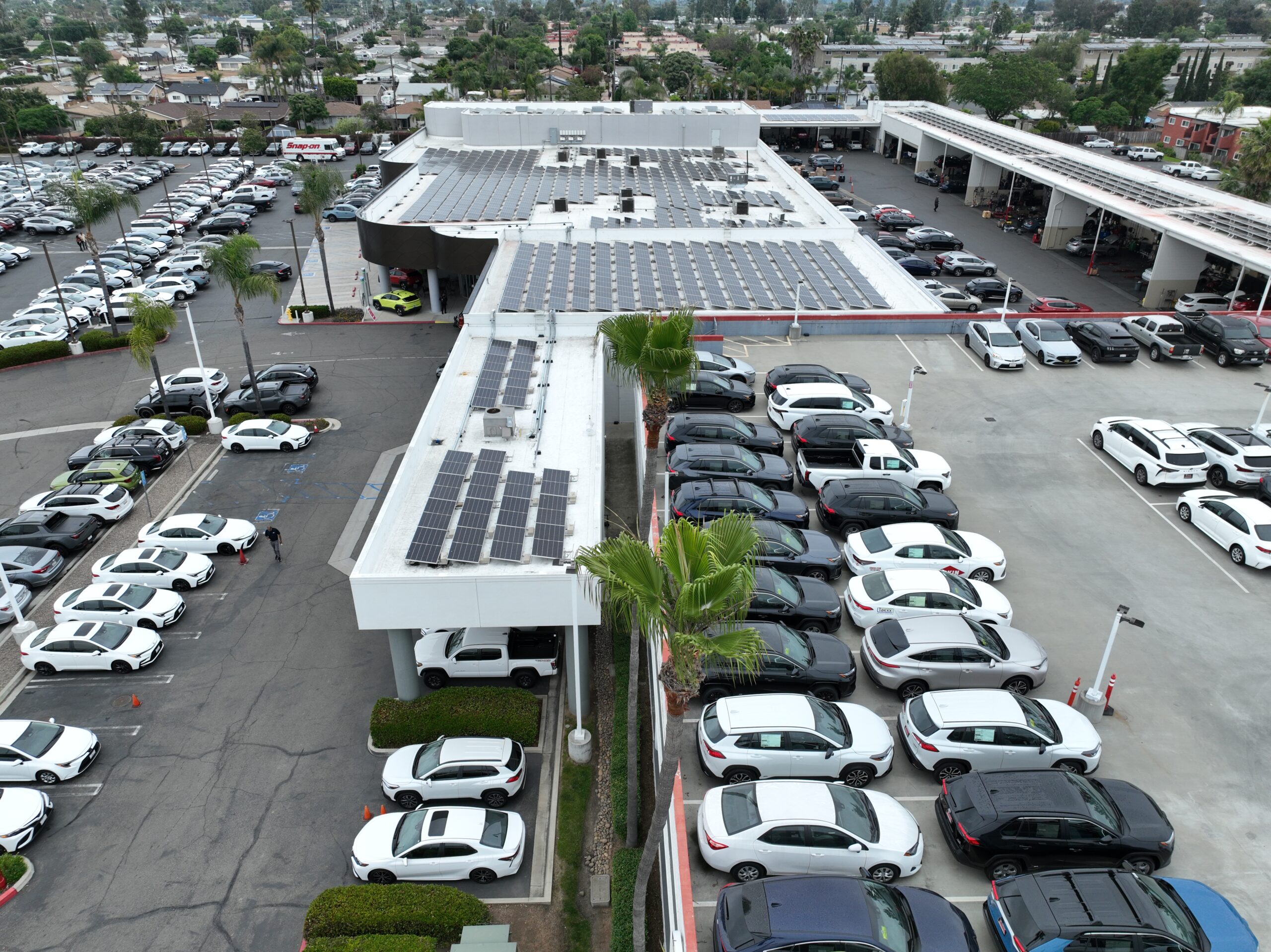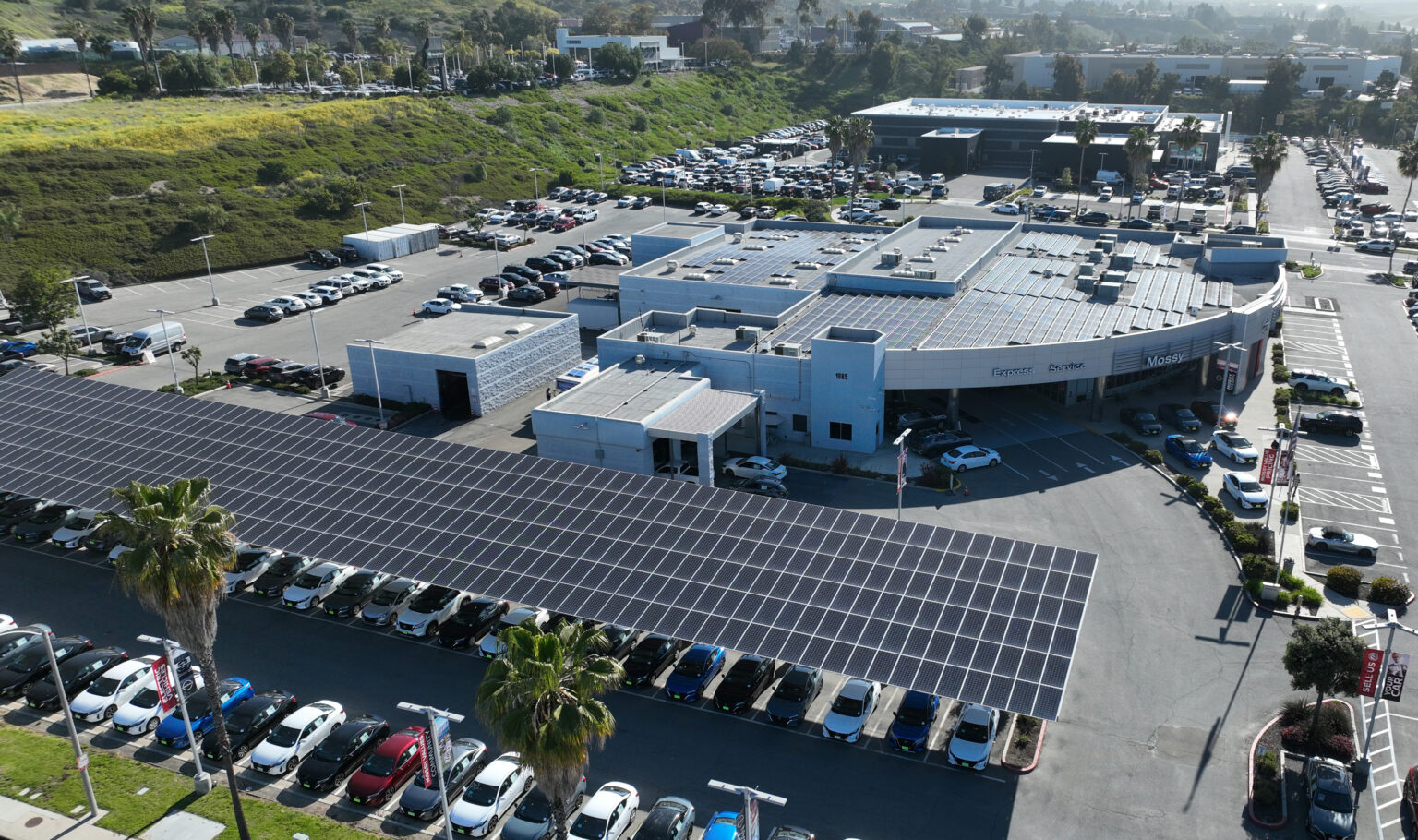Commercial Solar Tax Incentives: A Guide to Maximizing Your Savings
With substantial tax incentives and the falling cost of equipment, going solar can significantly reduce energy bills, provide long-term savings, and enhance your company’s sustainability profile. Let’s delve into the major tax benefits available for commercial solar installations.
SolarTech diligently stays up to date about the tax incentives available to business owners in all relevant markets.
The Core Solar Incentives: ITC and PTC
Investment Tax Credit (ITC)
The ITC is a powerful upfront incentive. It allows you to deduct 30% of your commercial solar system’s cost directly from your federal taxes as a non-refundable credit. This significantly lowers your initial investment, improving cash flow, and shortening your payback period.
Production Tax Credit (PTC)
The PTC is an attractive alternative to the ITC as it provides a tax credit for each kilowatt-hour (kWh) of electricity your solar system produces over the first 10 years of operation. The current tax credit rate is 2.75 cents/kWh and is adjusted annually for inflation.
TAX ADVANTAGE
Which to choose? Pros and cons of ITC vs. PTC
The ideal choice for your business depends on these factors:
- Tax Appetite: If you need to offset a large tax liability in the first year, the ITC's immediate reduction is favorable. If you prefer spreading out benefits over time, the PTC may be better.
- Production Estimates: To assess the PTC's value, you'll need accurate estimates of your solar system's electricity generation. Our team can provide these estimates.
- Risk Tolerance: The ITC is a simple, predictable benefit. The PTC's value depends on future electricity prices and potential policy changes, creating some uncertainty.


COMMERCIAL TAX INCENTIVES
Eligibility for ITC and PTC
To qualify for either the ITC or the PTC, your commercial solar system needs to meet specific eligibility requirements. Here’s a breakdown of the key points:
- System Location: Projects must be located within the United States or U.S. territories.
- Equipment: The system must use new equipment or, in certain cases, limited amounts of previously used equipment.
- Ownership: You generally need to own the solar system to claim incentives. Projects involving leases to tax-exempt organizations are ineligible, though tax-exempt entities may directly own and benefit from solar systems or receive direct payments in lieu of tax credits.
- Commencement of Construction Deadlines: To claim the ITC (and to secure the highest benefits under the PTC), your project must meet IRS "commence construction" requirements before specific deadlines. We’ll help you navigate these deadlines.
RESOURCES
Eligibility rules for solar incentives
Eligibility rules for solar incentives can be complex, with nuances and regular updates. Please see below for resources for detailed eligibility:
The IRS is the ultimate authority on tax incentive eligibility. Consult their publications and notices for the most detailed and up-to-date information.
Provides summaries and guidance on federal energy-related incentives.
Summarizes the Inflation Reduction Act provisions specifically relating to renewable energy.
Credits
Boosting your benefits: Additional credits
On top of the ITC or PTC, you may qualify for bonus credits:
- Domestic Content Adder: If your solar equipment uses a significant percentage of U.S.-manufactured components, you could increase your credit.
- Low-Income Adder: Projects directly serving low-income communities may be eligible for a credit increase.
- Energy Community Adder: Installations in specific designated energy communities (such as former coal communities) are eligible for even larger benefits. (Energy Community Tax Credit Bonus - Energy Communities)

Special Considerations for Tax-Exempt Organizations
While tax-exempt organizations (nonprofits, schools, etc.) cannot use tax credits directly, they can still reap the rewards of solar. Options include:
- Partnerships: Forming partnerships with taxpaying entities can enable tax-exempt organizations to benefit from solar incentives.
- Direct Payments: For certain project types, direct payments in lieu of tax credits may be available.
Understanding Depreciation
Besides the ITC or PTC, these depreciation methods also benefit your bottom line:
- MACRS Depreciation This allows you to deduct a portion of your solar system's cost each year over its useful life.
- Bonus Depreciation: Significantly accelerates deductions, with 60% of the system's cost depreciable in the first year in 2024.
CASE STUDY
Comparing Your Options
To understand the financial impact between the ITC and PTC, let’s run through a hypothetical scenario:
- 750-kW commercial solar system with a $2,250,000 cost ($3.00/watt).
- Placed in service in 2025.
- First-year capacity factor: 20%
This case study compares the ITC and PTC using a sample year (2025) and a table outlining potential benefits over 10 years. A full financial analysis should consider the specific circumstances of your project, including:
- Federal and state tax rates
- Expected electricity production over the life of the system
- System maintenance costs
- Your business’s ability to utilize tax credits

ITC Option
- ITC Calculation:
- ITC rate: 30%
- Tax credit: $2,250,000 * 30% = $675,000
- Depreciation Calculations
- Depreciable basis after ITC: $2,250,000 * (1 – 30%/2) = $1,912,500
- Bonus depreciation (2025 rate): $1,912,500 * 40% = $765,000
- First-year accelerated depreciation: ($1,912,500 – $765,000) * 20% = $229,500
- Total Year 1 Tax Savings
- ITC: $675,000
- Depreciation tax savings (assuming a 21% tax rate): ($765,000 + $229,500) * 21% = $209,625
- Total: $675,000 + $209,625 = $884,625
PTC Option
- PTC Calculation
- First-year electricity generation: 750 kW * 24 hours/day * 365 days/year * 20% = 1,314,000 kWh
- Base PTC rate: 2.75 cents/kWh
- First-year PTC: 1,314,000 kWh * $0.0275/kWh = $36,135
- Depreciation Calculations
- Full depreciable basis (no ITC reduction): $2,250,000
- Bonus depreciation (2025 rate): $2,250,000 * 40% = $900,000
- First-year accelerated depreciation: ($2,250,000 – $900,000) * 20% = $270,000
- Total Year 1 Tax Savings
- PTC: $36,135
- Depreciation tax savings (assuming 21% tax rate): ($900,000 + $270,000) * 21% = $247,800
- Total: $36,135 + $247,800 = $283,935
Key Takeaways
- The ITC provides a substantial upfront benefit but has no ongoing tax incentives.
- The PTC offers smaller upfront benefits but provides tax credits over the first 10 years of the project, based on electricity production.
- Depreciation benefits are slightly higher in the PTC scenario due to the larger depreciable basis.
- Multi-Year Analysis (Refer to the table): To fully compare options, a table showing benefits over the 10-year PTC period and the life of the project is crucial.
Project Scale Insights
- In this case, the ITC’s upfront benefit significantly outweighs the PTC, with estimated total tax benefits of $1,076,625 (ITC) compared to $867,942 (PTC).
- Projects of this size and price ($3.00/watt and above) typically favor the ITC for maximizing financial returns.
- As project costs decrease into the sub-$2.00/watt range (often seen in utility-scale projects), the PTC can become more attractive due to its ongoing production-based benefits.

CREDIT MANAGEMENT
Managing Unused Tax Credits
IRS rules allow for either carrying unused tax credits back three years or forward for up to 22 years for projects placed in service in 2023 or later (projects placed in service before 2023 can carry the unused tax credits back one year and forward 20 years), ensuring you don’t lose out on these benefits.
How do I claim the ITC and PTC?
To actually claim these incentives on your tax returns, you’ll need to use the following IRS forms:
- ITC: Claim the ITC by completing and attaching IRS Form 3468 to your tax return. Instructions for completing Form 3468 are available on the IRS website at http://www.irs.gov/pub/irs-pdf/i3468.pdf
- PTC: Claim the PTC by completing and attaching IRS Form 8962 to your tax return. Instructions for completing Form 8962 are available on the IRS website at http://www.irs.gov/pub/irs-pdf/i8962.pdf
